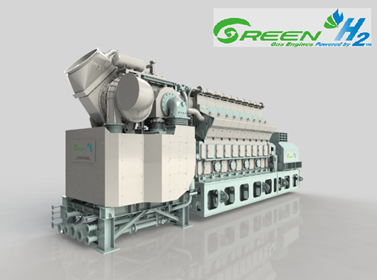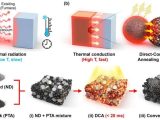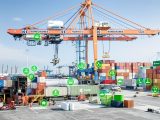
Hydrogen Storage and Zero-Emission Tech: Kawasaki’s Maritime Innovations
October 24, 2025Taking a big leap toward a carbon-neutral maritime future, Kawasaki Heavy Industries has just unveiled a full suite of hydrogen solutions that cover transport, storage, and power systems. At its core, you’ll find the world’s first commercial 30% hydrogen co-firing gas engines, a visionary 160,000 m³ liquefied hydrogen (LH2) carrier concept, and the ongoing build of a 50,000 m³ LH2 storage tank. Backed by NEDO’s Green Innovation Fund, this rollout isn’t just a demo—it’s a serious push to scale up hydrogen infrastructure, revolutionize hydrogen storage, and drive zero-emission technology as part of a broader sustainable energy strategy.
Overview of Breakthroughs
- Hydrogen-Ready Gas Engines: Commercial launch of engines co-firing up to 30% hydrogen by volume, with successful operational verification in September 2025.
- Liquefied Hydrogen Carrier Concept: A double-shell containment system for 160,000 m³ of LH2 at –253 °C, optimized for multi-week, long-range voyages with industry-leading boil-off rates.
- Large-Scale LH2 Storage Tank: Flat-bottom, cylindrical design (50,000 m³ capacity) kicked off in August 2025 at a cryogenic terminal in Hyogo Prefecture, offering modular expansion for growing ports and flexible hydrogen storage capacity.
- Supply Chain Digitalization: The Suiso Platform provides end-to-end tracking—from production wells to fueling stations—boosting transparency, safety, and laying the groundwork for carbon accounting in the push for industrial decarbonization.
Cutting-Edge Carriers and Tanks
Kawasaki’s LH2 carrier concept really pushes shipbuilding boundaries with its dual-layer insulation and spherical cryotanks. Each sphere, nestled in a perlite-filled jacket, slashes thermal conduction and keeps boil-off to a minimum. Early simulations suggest these vessels could haul green hydrogen from Australia to Japan with barely any losses over weeks at sea—an important stride in building out global hydrogen infrastructure.
On the port side, the new 50,000 m³ tank under construction in Hyogo Prefecture is designed for seamless integration with existing marine terminals. Its vacuum-insulated walls and multi-layer reflective shields cut heat ingress to a fraction of conventional LNG tanks. Plus, Kawasaki engineers are exploring plug-and-play modules so terminals can scale up hydrogen storage by snapping on additional segments—perfect for fast-growing markets.
Flexible Hydrogen Co-Firing Engines
The freshly validated Green Gas Engine can blend hydrogen and natural gas on the fly, adapting to fuel price swings and supply constraints. Initial rollouts target industrial power plants and marine auxiliaries, where uptime is critical. Kawasaki reports that swapping in 30% hydrogen cuts CO₂ emissions by about 20%, with negligible tweaks to maintenance schedules—an easy win for zero-emission technology.
Even better, these engines let operators retrofit existing units instead of shelling out for brand-new setups. That makes the switch budget-friendly. And Kawasaki isn’t stopping at 30%: they’re aiming for 70% hydrogen co-firing by the early 2030s, paving the way toward fully hydrogen-fueled operations.
Building a Complete Hydrogen Supply Chain
All these pieces come together in a national demonstration led by Japan Suiso Energy (JSE) and funded via NEDO. At Kawasaki City’s LH2 terminal, JSE handles liquefaction and on-site logistics while Kawasaki supplies cryogenic tanks and ship-transfer systems. It’s a plug-and-play model for hydrogen hubs that can be replicated elsewhere.
Digitally, the Suiso Platform logs pressure, temperature, and volume data in real time—so operators can fine-tune shipping schedules, manage boil-off, and verify fuel quality on delivery. This kind of digital backbone not only boosts safety but also sets the stage for carbon tracking and trading as part of broader industrial decarbonization efforts.
Historical Context and Policy Drivers
Japan’s hydrogen journey ramped up in the mid-2010s when the government pledged a 46% cut in greenhouse gas emissions by 2030 (from 2013 levels). Attractive incentives for renewables and tax breaks for low-carbon tech drew private investment, and Kawasaki swung its century-old shipbuilding know-how toward R&D. The Suiso Frontier—the world’s first LH2 carrier—entered service in 2019, proving the concept and paving the way for today’s larger commercial-scale designs.
Business and Market Dynamics
Green hydrogen still carries a premium over traditional fuels, but falling electrolysis costs and rising carbon prices are tightening the gap. Kawasaki projects that, with production scale and wide infrastructure rollout, green hydrogen could drop to around $2/kg by 2030. At that price—when you factor in carbon taxes and Emission Control Area rules—maritime use can compete with low-sulfur fuel oil.
Interest isn’t limited to Japan. European governments are eyeing these shipping solutions, and Southeast Asian terminal operators are in early talks to adopt Kawasaki’s tanks and transfer systems. Spreading investment across regions makes big carrier and engine orders more attractive for all parties.
Strategic Implications
For Japan, this effort goes beyond cutting emissions. Building a robust hydrogen ecosystem also strengthens energy security by reducing reliance on LNG and oil imports, while positioning Japanese firms as leaders in technology exports. Kawasaki aims to have its LH2 carriers in routine service by 2031 and see hydrogen co-firing become standard in coastal and industrial settings—potentially slicing several million tons of CO₂ from the nation’s maritime footprint every year.
Globally, ports from Rotterdam to Singapore are watching closely. If Kawasaki’s integrated approach proves safe, reliable, and cost-effective, it could spark similar hydrogen infrastructure clusters around the world, laying the logistics foundation for a true global hydrogen trade network.
Looking Ahead
On the roadmap: boosting hydrogen blends in engines and finalizing the detailed design for the 160,000 m³ carriers, while JSE and NEDO refine terminal operations to hit commercial volumes by 2028. Challenges remain—especially in cryogenic tech and scaling up electrolysis—but with proven prototypes, public funding, and private capital all in play, the pieces are falling into place. The day when zero-emission shipping moves from pilots to everyday reality might be just around the corner.



 With over 15 years of reporting hydrogen news, we are your premier source for the latest updates and insights in hydrogen and renewable energy.
With over 15 years of reporting hydrogen news, we are your premier source for the latest updates and insights in hydrogen and renewable energy.
Hi Angela,
I have read your article with interest and wonder if you could help me out. Quite rightly the general theme with respect to developing Hydrogen is as a source of energy but, I wonder if there is an interest in the air transport market concerning airships, both as the main lifting gas and as the propulsion energy system?
Some years ago I had an an idea for using H2 in conjunction with Helium as the safety gas and recently developed it further with respect to being able to lift a reasonable payload over large distances simply due to having worked out how to use it to control the airship Centre of Gravity (C of G) and therefore, its 3-axis flight regime.
Despite having no success in gaining UK Govt. innovation interest for a Feasibility Study, what I have discovered is that safety and C of G issues were the main reasons for the lack of understanding that H2 is surprisingly safe in this role. I wonder therefore, if you have come across an ambivalence toward using H2 in the scenario I have described or not!